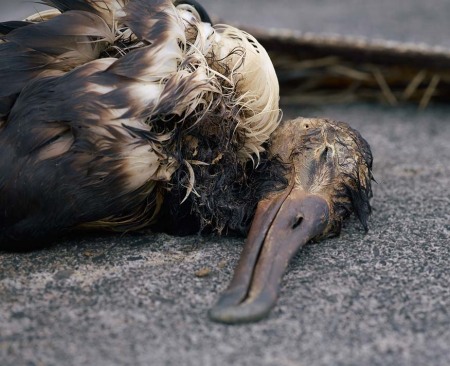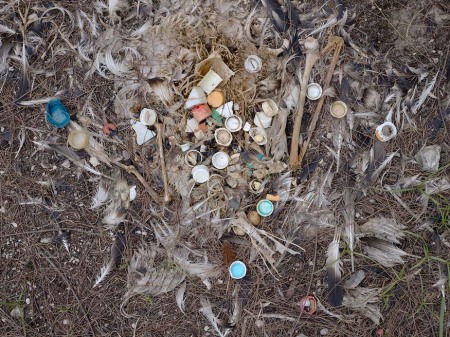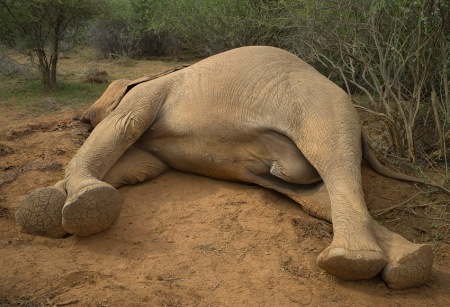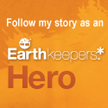The Great Pacific Garbage Patch within the North Pacific Gyre, is now twice the size of Texas, and still many people are not yet aware of it. The patch is a result of marine pollution such as dumping from large ships, as well as every day litter on beaches and coast. But most of it, believe it or not, is garbage that has been blown by wind off of land. In fact, an estimated 80% of the garbage in the patch comes from land based sources, whereas only 20% comes from ships. What exactly is in the patch? Plastic. The answer is always plastic. Plastic is a synthetic material invented by man that never degrades. Some love it just for that reason.
Unfortunately, this is plastic’s biggest fault. Our culture of disposable plastics like bottled water, packaging, grocery bags, single serving containers, etc. has not yet replaced “real plastic” with green biodegradable versions. Plastic does not biodegrade, it just photo degrades, meaning that it breaks down visually until it becomes so small and invisible while still maintaining its toxic molecular structure that it makes its way into the food source of the smallest of aquatic organisms– plankton. The key to life in the oceans. Plankton is the most abundant life form on earth, and now in the plastic gyre, it is found only 1 to each 7 pieces of floating plastic.
This isn’t the only organism to ingest our plastic waste– sea turtles, fish, jelly fish, and others– are all known to have mistaken brightly colored bits of plastic as food. Not only is the plastic non-ingestible and can do all sorts of harm to their stomachs and throats (imagine swallowing a frisbee every day), but plastic contains a host of toxic chemicals like cancer causing BPA (bisphenol A) and Polysterene (which contains poisons like flame retardants and benzene, known carcinogens). The plastic also absorbs other organic pollutants in the water like DDT (the banned pesticide), PCBs (polychlorinated biphenyls) and others which are known as endocrine disrupters, meaning that they alter the levels and state of hormones of the animals that ingest them. And this isn’t just about the fish turning androgynous– the humans like us that eat them can be greatly affected too. All those warnings about women eating fish during pregnancy? They’re not only because of mercury content, but also because of toxic chemicals that have been absorbed by sealife through the ingestion of plastics which have in turn absorbed these chemicals.

One of the animals most greatly affected is the Albatross. This starring character from Coleridge’s The Rhyme of the Ancient Mariner is severely threatened by our current consumptive habits. Specifically, the Black Footed Albatross and Laysan Albatross, who make their home on isolated tropical islands in the North Pacific Gyre, are currently considered an endangered species. Not only are they accidentally caught by longline fishing, but they are prone to eating the colorful pieces of floating plastic that resemble food in the garbage patch. The plastic causes all sorts of havoc in their stomachs, and leaves them full with less room for real food. Parents of albatross chics bring these plastic bits resembling food back to their hungry chics, who’s stomachs fill up too quickly with poisons and in-digestible materials. They barely make it a few months on this diet.

Chris Jordan, a photographer that deals with ideas surrounding America’s vast consumption habits and its resulting consequences, took a trip out to the Pacific Gyre and Garbage patch and found a gut wrenching subject for a new body of work. The stomach of baby albatross chics. What he found was truly shocking and horrific, even unbelievable. But believe it. This is photography in the classical sense in that he is photographing what already exists in front of him without additional creation or manipulation.

“These photographs of albatross chicks were made just a few weeks ago on Midway Atoll, a tiny stretch of sand and coral near the middle of the North Pacific. The nesting babies are fed bellies-full of plastic by their parents, who soar out over the vast polluted ocean collecting what looks to them like food to bring back to their young. On this diet of human trash, every year tens of thousands of albatross chicks die on Midway from starvation, toxicity, and choking.”

“To document this phenomenon as faithfully as possible, not a single piece of plastic in any of these photographs was moved, placed, manipulated, arranged, or altered in any way. These images depict the actual stomach contents of baby birds in one of the world’s most remote marine sanctuaries, more than 2000 miles from the nearest continent.”

The images are straight-forward in their approach, photographed from a similar vantage point and distance, leaving the viewer with nowhere to go but facing the reality of what he’s setting in front of them. Various states of death and decay are portrayed, from some birds that seem fairly in tact, like their death might have occured just a few days ago, to others that are merely a pile of bones. However, it becomes clear right away the message and purpose of the photographs. Chris is clearly highlighting the contents of these baby chics’ stomachs– plastic. The closer and longer you look, the more you can identify. Fishing line is prevalent, as are hundreds of bottle caps, can openers, cigarette lighters, stuff you wouldn’t imagine. If humans ate these things on a daily basis we would suffer a great deal. Now imagine a baby bird, a fraction of our size, eating the same thing. Eating our garbage which it mistakes as food. Why are we using a material that is meant to last forever to make things designed to be used for only a few seconds and then tossed away?

There is a desperation apparent in these pictures. It is the result of the death and decay in the photographs, but also in the feelings of disgust and horror the viewer is experiencing. Chris is showing us the direct result of our habits. He is making the clear connection between society’s consumptive and wasteful habits and the consequences of that. He is showing us that our garbage doesn’t just disappear at night never to be thought of again. That is has dire consequences, and not just for an animal thousands of miles away, but also closer to home, in the food that we eat and the ocean in which we swim. We have altered the composition of the ocean forever. Now, every sample of water or sand from anywhere in the world, contains plastic. Is this the world we want to leave for our children and our grandchildren?

If you’d like to hear Chris talk about the ethics involved in photographing these birds (ie. no plastic was added or moved in the process), you can do so via this 2 minute clip on vimeo. And to see more of his work, please visit his website.



























